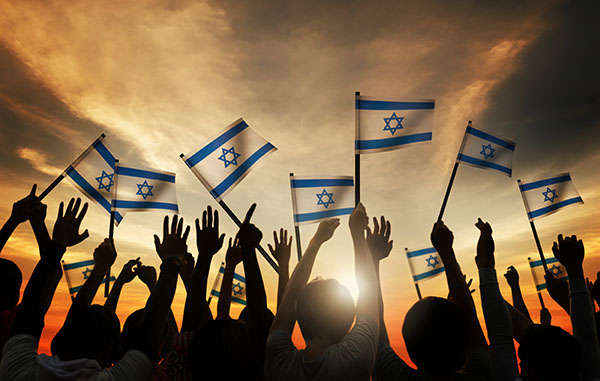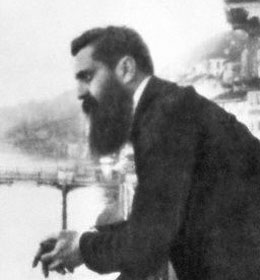What is Yom HaAtzma’ut and when do we celebrate it?
The name ‘Yom HaAtzma’ut’ means ‘Independence Day’. On the fifth of Iyar, 5708, which corresponded with the 14th of May 1948, the Provisional State Council proclaimed the State of Israel. Yom HaAtzma’ut is a national holiday in Israel and is also celebrated by Jews around the world, although generally not by haredi (ultra-Orthodox) Jews.

HISTORICAL BACKGROUND

Jews have lived in the Land of Israel for nearly 4000 years, going back to the period of the Biblical patriarchs (c.1900 BCE). The story of Jewish life in ancient Israel is recorded in detail in the Hebrew Bible (called the “Old Testament” by Christians).
The dispersion of the Jewish people is traditionally dated from the destruction of their Temple in Jerusalem. In the ensuing years the greater part (but not all) of the Jewish population went into exile as captives, slaves and refugees, although Galilee remained a centre of Jewish institutions and learning until the sixth century CE. Through the centuries of their exile, the hope for redemption of the land of Israel remained a focal point of the Jewish religion and national identity.
Religious Zionism therefore remained a constant for the two thousand years from the time of the exile. Political Zionism, which aimed to restore a Jewish homeland in Palestine, only emerged as a movement in Europe during the late 19th century. In 1897 journalist Theodore Herzl convened the first Zionist Congress at Basel in Switzerland. The congress comprised 204 representatives of Jewish communities and created the World Zionist Organisation.
In 1882 the first of the modern Zionist waves of immigration began. These immigrants established agricultural settlements under conditions of severe hardship, and were generally dependent on the support of Jewish philanthropists. There was a second wave of immigration in 1904 after further persecution in Russia. By 1914 the Jewish population of Palestine was approximately 85,000 in a total population of approximately 650,000.

On 14th May 1948 the British flag was lowered and the Declaration of the Establishment of the State of Israel was proclaimed. It included the following words:
We appeal in the very midst of the onslaught launched against us now for months to the Arab inhabitants of the State of Israel to preserve peace and participate in the up-building of the State on the basis of full and equal citizenship and due representation in all its provisional and permanent institutions.
We extend our hand to all neighbouring states and their peoples in an offer of peace and good neighbourliness, and appeal to them to establish bonds of co-operation and mutual help with the sovereign Jewish people settled in its own land. The State of Israel is prepared to do its share in common effort for the advancement of the entire Middle East.
PRAYERS FOR YOM HAATZMA’UT
The Chief Rabbi of Israel has designated prayers to be said on Yom HaAtzma’ut in Israel, although these prayers are not accepted all over the world. The Department of Torah Education has issued a manual called ‘Aikkun’ which contains the order of service for Yom HaAtzma’ut. In addition, many communities add prayers for the welfare of the State of Israel and the IDF (Israeli DefenSe Force).
ORDER OF SERVICE
-
- The service begins with Thanksgiving prayers (Psalm 107) and continues with selections from the Kabbalat Shabbat service (the service recited on Friday night) and Lecha Dodi prayers (also said on Shabbat).
- The evening service, Ma’ariv is then recited, followed by the first verse of the Shema.
- The Shofar is blasted and we say “Next year in Jerusalem”.
- The service is concluded with the singing of Shir Hama’alot and Ani ma’amin.
- During the morning service – Shacharit, the Hallel prayer is said in its shortened version, called Chetzi Hallel.
- The Shehehiyanu and Al Ha’nisim prayers are becoming accepted in many communities as part of the observance of the day.
TRANSLITERATION AND TRANSLATION OF PRAYERS
She’he’hi’yanu
Baruch ata Adonai, Eloheynu Melech ha’olam shehehiyanu ve’kiymanu ve’higiyanu la’zman ha’zeh
“Blessed are You, O Lord our G-d, King of the universe, Who has kept us in life, and has preserved us, and enabled us to reach this season.”
She’asah Nissim
Baruch ata Adonai Eloheinu Melech ha’olam. Sheasa nisim la’avoteynu ba’yamim hahem ba’zman hazeh
“Blessed are You, O Lord our G-d, King of the universe, Who wrought miracles for our fathers in the days of old, at this season.”
LINKS TO PAGES ON OTHER SITES
Aish Hatorah: Israel Independence Day
About.com: Israeli Holidays
Israel’s Declaration of Independence
Jewish Virtual Library: Yom haAtzma’ut – Israeli Independence Day
My Jewish Learning: Yom Ha’atzmaut
Orthodox Union: Yom ha’Atzmaut
Project Genesis: Yom Ha’atzmaut
YU Torah Online: Yom Haatzmaut To Go (articles from a religious Zionist perspective)


